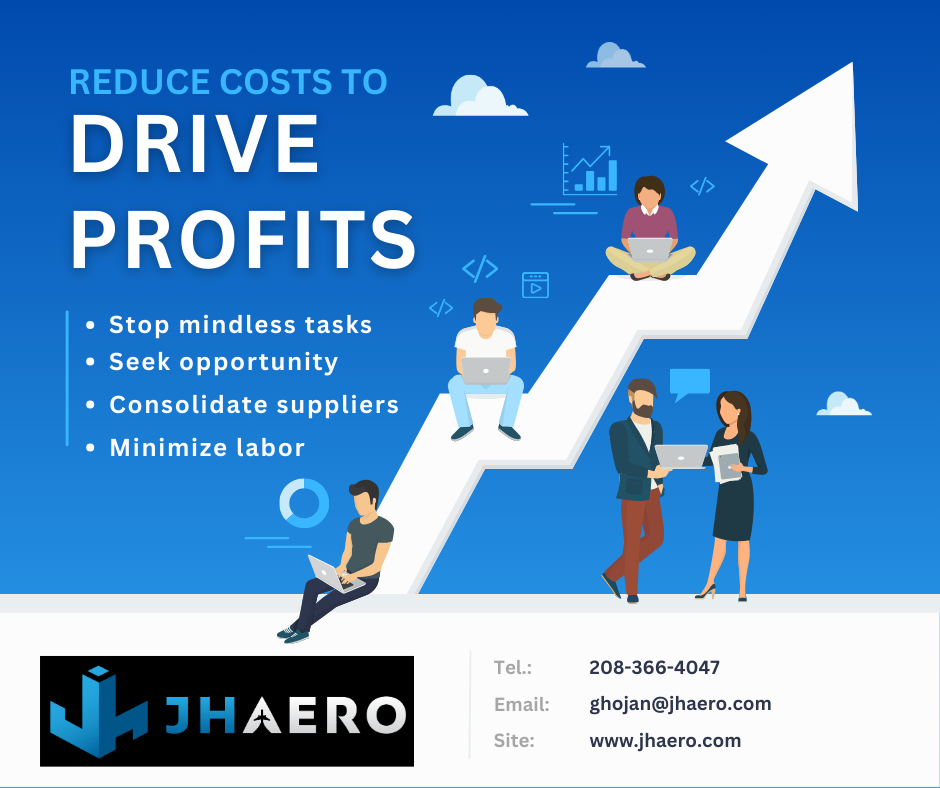By Garry Hojan
Profit = Total Revenue—Total Expenses. The two items listed here are sales and costs. Those are the two levers that adjust the business’s profitability and cost reduction, which has a multiplier effect.
The reason for the multiplier effect on profit is as follows: If I cut $100 of non-revenue generating expenses, it almost always goes directly to the bottom line as $100 profit.
If I want to earn $100 in profit from sales and I sell my widgets for $100 each at 20% margin, then I have to sell and support $500 worth of widgets for the equivalent (not quite) profit effect. Don’t even get me started on if one of those widgets has a field service issue under warranty.
Keeping an eye on costs and looking for ways to better reduce them is critical, but can I start with a warning please? For the love of all things sacred P-L-E-A-S-E don’t trip over dollars to save dimes!
What does that mean? Basically, don’t do things that cost you more to manage than what you actually save.
I had an owner who liked to check every invoice for mistakes from the nut and bolt supplier. The Production Manager had the department lead in assembly count the nuts, bolts, and washers every few weeks. Then, he would get their sheets and check them. He would go check and recount if he saw something he thought was an issue. I remember him remarking how he had to do this repeatedly (time to investigate the root cause?).
Then, there is added labor for the purchaser’s data entry on each order, then shipping and receiving to check things in, stock the bins in assembly, and notify purchasing, who pulls the purchase order and files it with receipt docs.
I added up all the time of the owner, production manager, lead, purchasing, and receiver in this process using each position’s hourly rate. I showed the owner how much it was actually costing the company to keep track of nuts, bolts, and washers, a miniscule cost factor in the company.
Then I showed him the lost opportunity cost calculations of our time on cost rather than value- added work like customer relationships, assembling customer products. It was a crazy amount of money in the costs column.
And the kicker? I let the owner know that the vendor offers onsite inventory management at no extra charge (basically, the vendors already had this baked into the pricing).
His first reply was, “No, they’ll just overstock me and bill me.” (there’s that whole trust and perspective thing again).
I let him know that we set the minimums and maximums per line item with the vendor; they can’t just overstock and bill. Besides, they’d jeopardize losing the account and reputation.
You could even compound the cost reduction by also negotiating actual hardware costs with multiple vendors, stipulating that onsite inventory management is part of your requirement, which we did.
You may even want to ask the vendor what percentage of costs usually cover on-site inventory management if you think the number would be higher than the in-house management costs. In our case, it was substantially more cost-effective to have the vendor do the on-site inventory management.
It took about a month after that to change to managed inventory after years of tripping over dollars to save dimes doing it the old way.
Substantial cost savings, accuracy, more investment in not letting us run out, improved morale over not having to do a tedious job. What’s not to like?
You must ruthlessly route out unnecessary costs like this. Again, every dollar saved is profit on the bottom line that can be used to keep the company healthy, grow, put towards innovation, improve benefits, give to philanthropy, and have a positive impact.
The Google search answer on “areas to look at for potentially reducing costs”:
- Negotiating with suppliers,
- Outsource,
- Maximizing inventory,
- Technology investments/automation,
- Ask employees,
- Reduce production costs,
- Go paperless (there is debate over this),
- Lower your financial expenditures,
- Modernize your marketing,
- Budget consistently,
- Employee perks (I wrote about this in another newsletter, it’s true, can reduce costs),
- Improve productivity/efficiency,
- Reduce travel,
- Optimize meetings,
- Analyze tax savings.
They didn’t include keeping labor turnover to a minimum, standardizing where possible, and being critically mindful of the cost of change and variety/customization. If asked, I could write a whole newsletter on the cost of change and variety.
Need another perspective on reducing your operational costs? Let’s chat.
Never any sales pressure, a no-charge initial consult, and a simple zero risk guarantee…you receive higher value over cost, or you don’t pay.
You can email me at ghojan@jhaero.com or call my cell at 208-627-2565.


